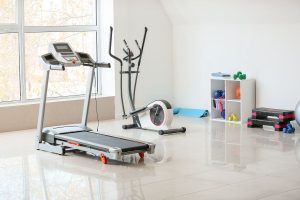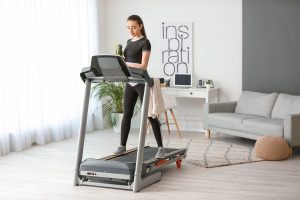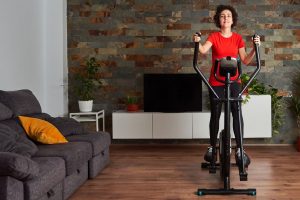![Activities to Avoid With Sciatica & Other Spinal Pain [Best Exercise Included] 1 Activities to avoid with sciatica](https://ellipticalmag.com/wp-content/uploads/2022/03/Piriformis-syndrome.jpeg)
Unlike any form of pain, Sciatica pain is challenging to manage by resting or taking medications. According to a recent study by Harvard Health, exercise can be the best way to prevent or help relieve sciatica pain. But not all exercises are helpful. Instead, some can make the pain worse.
In this post, you’ll learn about 12 activities to avoid with Sciatica pain, as well as those that can alleviate the pain. Also, is elliptical good for sciatica? Additionally, you will have a better understanding of the underlying causes and signs of sciatica pain.
What is Sciatica?
![Activities to Avoid With Sciatica & Other Spinal Pain [Best Exercise Included] 2 Sciatica](https://ellipticalmag.com/wp-content/uploads/2022/03/Sciatica.jpeg)
Sciatica is pain that spreads from your lower back down your hips and buttocks and each leg along the sciatic nerve route. In most cases, Sciatica affects the right side of the body and, less commonly, the left side or both sides. Sciatica is not contagious but a chronic disease that persists for a long time and may worsen over time.
Sciatica Symptoms
The main symptoms of Sciatica are pain from the spine to the buttocks and the back of your leg. Sometimes, the pain can be mild to moderate or severe, making you feel very uncomfortable. The pain quickly gets worse and may last 4 to 6 weeks. The sensations of sciatica pain are:
- Burning pain
- Electric-shock like pain
- Numbness
- Pins and needles
- Tingling etc.
In many instances, there is a chance that extreme pain suddenly disrupts your daily life activities. Moreover, Coughing and sneezing will make the pain worse, and sitting or standing for long periods will exacerbate sciatica symptoms.
Causes, How Sciatica Pain Occurs?
The bones of the human spinal cord are called vertebrae. The creation of vertebrae started from the very beginning of your skull and ended with your tailbone. The vertebral bones have a round cushion called a disc. The function of these desks is to act as a buffer between your vertebral bones. With the help of disks, you can walk and move freely. When disc ruptures or leaks due to an injury or aging, the resulting disc is called a herniated disc. An average of 2% of people get herniated discs each year.
Herniated discs can be in any part of the spinal cord. However, the possibility of being in the lower of the back (Lumbar vertebrae) is infrequent. If you have a herniated disc in the lower back, it can pressure your sciatic nerve and
If you have Spinal Stenosis, you may also suffer from Sciatica. Spinal stenosis refers to the abnormal narrowing of the vertebral canal in the spine. Aging causes jagged edges of the spinal cord. Injuries to the sciatic nerve or lumbar spine can also cause sciatic pain. When there is a tumor in the lumbar spinal canal, the sciatic nerve contracts.
Piriformis syndrome can lead to Sciatica. Piriformis syndrome is a neuromuscular disorder. Deep in the buttocks is the piriformis muscle, an abnormal condition. In people with neuromuscular disorders, the piriformis muscles become stiff. Neuromuscular diseases can cause pressure on the sciatic nerve; the result can be irritating.
Cauda equina syndrome is a rare species disorder. The cauda equina is a bundle of nerves at the end of the spine. Cauda equina syndrome will lead to various symptoms that are very similar to Sciatica.
12 Activities to Avoid with Sciatica Pain
Exercise is a great way to get relief from sciatica pain, but there are some types of exercise that can make your sciatica condition worsen. So, what to avoid with sciatica nerve pain? Let’s see 12 exercises to avoid with Sciatic nerve pain:
1. Heavy Stretching of the Hamstrings
Heavy stretching of the hamstring puts undue pressure on the muscles. There is a risk of damaging the sciatic nerve by doing this. So, heavy stretching will make your sciatica pain worse.
2. Bent Over Rows
Rowing can strain your lower back and worsen sciatica pain, especially when you do it with a rounded spine. This can also cause inflammation, resulting from a herniated disc or an injury.
3. Straight Legged Sit-ups
Straight-legged sit-ups put a lot of pressure on your spine. Can sit-ups cause sciatica? No! It won’t cause sciatica, but if you have an existing sciatic problem, then sit-ups will cause serious sciatica pain. So, if you do sit up, this can further upset the structure of your spine. Therefore, numbness and inflammation below the waist are seen.
4. Abdominal Stretches
Patients suffering from sciatica should avoid this workout. Pressure is placed on the backbone as a result of the technique. It has the effect of causing the sciatic nerve to constrict.
5. Full Body Squats
Squatting with a barbell damages the lower part of the spine. The result is a contraction of the nerves, and discs can cause hip and leg pain. So, you have to refrain from doing this.
6. Weighted Squats
Weighted squats put pressure on the legs leading to pain and injury. Instead, you can try this exercise without weights, keeping your core engaged and your back in a neutral position. But you should stop if you feel any pain or tightness in your back.
7. Heavy Dead-lifts
Exercising using something weighty can lead to spinal cord injuries. Heavy deadlifts are one of the causes of lower back pain. So, the sciatica patient must move away from this Work.
8. Weightlifting
Weightlifting should only be done by those whose spine is entirely healthy. So, weightlifting with sciatica needs to be avoided for those with lower back pain. This Work is not suitable for you if you have a herniated disc.
9. Supine Leg Circles
You might hear that Supine leg circles help to relieve Sciatica. But unfortunately, you’re mistaken. The central fact is that this exercise stretches your hamstring as you rotate your leg in a circular motion. That’s why it can be irritable for the sciatic nerve, causing pain.
10. Burpees
Do you suffer from sciatica pain? If so, you’re not alone. Sciatica is a common condition that affects millions every year. While many different treatments are available, one of the simplest and most effective is avoiding burpees.
Burpees involve high-impact movements that can aggravate back and hip pain. Moreover, repeatedly bending forward and jumping aggravate sciatica pain.
11. High-impact Sports
Avoid any high-impact sport because that can put a lot of stress on your back. Basketball, soccer, tennis, volleyball, running, HIIT workouts, etc., are generally considered high-impact sports.
12. lifts
If you are experiencing sciatica pain, it is important to avoid activities that exacerbate your symptoms. Lifting heavy objects is one such activity. Lifting can cause your back muscles to tighten, increasing pressure on the sciatic nerve and worsening your pain. Additionally, lifting can also lead to injuries such as herniated discs. If you must lift something, try using a tool or ask for help.
Sciatica Pain During Pregnancy
During pregnancy, your body goes through a lot of changes. Your weight increases, your center of gravity changes, and your hormones are fluctuating. All of these factors can put a lot of extra strain on your back and spine, which can lead to sciatica.
So, if you are pregnant and suffering from sciatica pain, there are a few things you can do to help ease the pain. First of all, try to avoid sitting or standing for long periods of time. While sitting or standing, make sure to do so with good posture. And also, try to sleep on your side with a pillow between your legs to support your back. Now, try some gentle stretching exercises to help relieve the tension in your back and legs.
Furthermore, for severe sciatica pain or, that persists despite these self-care measures, you should see your doctor. They may recommend other treatments, such as physical therapy or pain medication.
Can Low-impact Exercises Help With Sciatica?
There are many ways to relieve sciatica symptoms, including medications, injections, and surgery in some cases. One of the best ways to treat Sciatica pain is by regularly doing low-impact workouts. Helpful low-impact activities include Knee to Chest, Glute Bridges, Sitting Pigeon Pos, Sitting Trunk Stretch, Child’s Pose, Standing Hamstring Stretch, Pelvic tilt, Low Impact Cardio, etc.
Get Relieved with These 9 Best Aerobic Exercises for Sciatica Pain
Sciatica pain is reduced by doing suitable exercises that can help improve the health of the muscles and joints in your spine. You have to exercise daily because low-impact exercises are things to help with sciatica nerve pain than taking bed rest. Moreover, sciatica pain is more common among overweight people who lead a sedentary lifestyle. Let’s see the 9 best exercises to help with sciatica pain:
1. Knee to Chest
Sciatica pain can be caused by several things, including a herniated disc, spinal stenosis, or piriformis syndrome. Exercises that stretch the piriformis muscle in the hips and buttocks can help relieve sciatica pain. One such exercise is the knee-to-chest stretch exercise to reduce sciatica pain.
2. Glute Bridges
Sciatica pain is a common problem caused by several things, including a bulging or herniated disc, spinal stenosis, and piriformis syndrome. While some treatments can help relieve the pain, glute bridges are the simplest and most effective. Glute bridges can help stretch and loosen the muscles around the sciatic nerve, which can help to relieve the pain.
3. Sitting Pigeon Pose
The sitting pigeon pose is a yoga pose that can help to relieve sciatica pain. This Pose stretches the piriformis muscle, which can help to relieve pressure on the sciatic nerve. The Pose also strengthens the glutes and hamstrings, which can help to improve flexibility and reduce pain.
4. Sitting Trunk Stretch
Sitting trunk stretch is a great way to help relieve sciatica pain. The time helps to lengthen the spine and relieve tension in the back and hips. It is possible to do it anywhere with no specific equipment. To do the sitting trunk stretch, sit with your feet flat on the ground and your knees bent. Move forward while keeping your back straight. Grab your toes. Hold the space for 10-30 seconds, then release. Repeat 2 to 4 times.
5. Child’s Pose
Child’s Pose is a yoga pose that can be used to alleviate sciatica pain in certain people. The Pose consists of sitting on your heels with your arms held out in front of you, and it may be customized to meet your specific needs.
6. Standing Hamstring Stretch
Standing hamstring stretch may help to relieve the symptoms of Sciatica. This stretch can be performed by standing with the feet together and bending forward at the waist. Reach down and grab the ankles or shins. Hold the space for 30 seconds and then repeat three times.
7. Pelvic Tilts
When it comes to treating Sciatica, pelvic tilts are one of the most widely employed techniques. Pelvic tilt exercises are beneficial in that they stretch and strengthen the muscles that surround the spine and pelvic area.
8. Hula Hooping
Hula hooping can help relieve sciatica pain by massaging the affected area and promoting blood flow. So, is hula hooping good for sciatica? Yes, but do not hoop faster. The gentle, repetitive motions can also help to relax the muscles and ease the pain.
9. Low Impact Cardio
Low-impact cardio is a wonderful activity for persons who suffer from sciatica pain. Since it is mild on the body while still providing considerable health advantages to the individual who participates. So, less-impact exercises help with sciatica nerve pain.
Is Elliptical Good for Sciatica? Learn How
Using an elliptical machine for those suffering from Sciatica has many advantages. Some are as follows:
- The elliptical machine provides a low-impact exercise, gentle on your joints.
- The elliptical machine allows you to move in multiple directions, which can help relieve the pressure on your sciatic nerve.
- The elliptical machine provides a low-impact cardio workout, which can help improve your overall health and reduce your risk of further injury.
Also Read: The elliptical and walking are two of the most popular low-impact cardio exercises. The elliptical machine, on the other hand, has many advantages over simply walking.
What is Piriformis Syndrome and Why Does It Happen?
Piriformis syndrome is a condition in which the piriformis muscle, a small muscle located deep within the buttocks, spasms and causes pain. The pain is often felt in the lower back, hip, and buttocks, and may radiate down the leg. Piriformis syndrome is often confused with sciatica, a condition in which the sciatic nerve is compressed because the pain patterns are similar.
![Activities to Avoid With Sciatica & Other Spinal Pain [Best Exercise Included] 3 Piriformis Syndrome](https://ellipticalmag.com/wp-content/uploads/2022/03/Activities-to-avoid-with-sciatica.jpeg)
Piriformis Syndrome Symptoms
The most common symptom of piriformis syndrome is pain in the buttock, hip, and lower back. The pain may radiate down the leg and is often worse when sitting or when climbing stairs. Other symptoms may include:
- A feeling of numbness or tingling in the leg
- Weakness in the leg
- Difficulty moving the leg or hip
Piriformis syndrome is a condition that can be painful and debilitating. However, with proper diagnosis and treatment, most people are able to find relief and return to their normal activities.
Is Sciatica and Piriformis Syndrome the Same Thing?
![Activities to Avoid With Sciatica & Other Spinal Pain [Best Exercise Included] 4 Sciatica and Piriformis Syndrome](https://ellipticalmag.com/wp-content/uploads/2022/03/Sciatica-and-Piriformis-Syndrome.webp)
There is a lot of confusion when it comes to the terms sciatica and piriformis syndrome. While it is true that both conditions can cause pain in the buttock and down the leg, there are some key differences between the two.
Sciatica is typically caused by a herniated disc or spinal stenosis, which puts pressure on the sciatic nerve. This can result in pain, numbness, and weakness down the leg.
On the other hand, piriformis syndrome is caused by the piriformis muscle compressing the sciatic nerve. This can also lead to pain and numbness down the leg, but weakness is usually not a symptom.
So, while the two conditions may have similar symptoms, they are not the same thing.
Activities to Avoid With Piriformis Syndrome
There are a few activities that people with piriformis syndrome should avoid. These activities include:
• Running or jogging.
• Sitting for long periods of time.
• Wearing high heels.
• Doing any activity that involves rotating your hip.
For piriformis syndrome, it is important to avoid these activities and to talk to your doctor about what activities are safe for you to do.
What Cardio Can I Do With Piriformis Syndrome
When you have piriformis syndrome, you may be wondering what kind of cardio you can do. The good news is that there are plenty of options! Here are a few examples:
- Swimming is a great option for people with piriformis syndrome. The water provides resistance that can help to strengthen the muscles around the hip and pelvis.
- Cycling is another great option for people with piriformis syndrome. It is low-impact and can be done either outdoors or indoors on a stationary bike.
- Walking is a good option for people with piriformis syndrome who are just starting to exercise. Start with short walks and gradually increase the distance as your symptoms allow.
So, if you have piriformis syndrome, there are plenty of cardio options available to you. Swimming, cycling, and walking are all great exercises that can help to reduce your symptoms and improve your overall health.
What is Spinal Stenosis and Why Does It Happen?
Spinal stenosis is a condition that occurs when the spaces in the spine narrow, putting pressure on the spinal cord and nerves. This can happen due to a number of reasons, including age-related wear and tear, arthritis, and injury. Symptoms of spinal stenosis can include pain, numbness, and weakness in the affected area. In some cases, the narrowing of the spine can also lead to problems with balance and mobility.
Spinal stenosis is a relatively common condition, especially in older adults. It is estimated that up to 10% of people over the age of 60 have some degree of spinal stenosis. While the condition can occur at any age, it is most often seen in people who are middle-aged or older.
Symptoms
The symptoms of spinal stenosis vary depending on the location and severity of the narrowing. In general, symptoms may include:
- Pain, numbness, or weakness in the legs, feet, or buttocks
- Difficulty walking or standing for long periods of time
- Loss of balance or feeling unsteady
In some cases, the symptoms of spinal stenosis can be mild and may only occur when the person is active. For example, they may only feel pain when walking or standing. In other cases, the symptoms can be more severe and can interfere with daily activities.
Sciatica Vs Spinal Stenosis
![Activities to Avoid With Sciatica & Other Spinal Pain [Best Exercise Included] 5 Sciatica Vs Spinal Stenosis](https://ellipticalmag.com/wp-content/uploads/2022/03/Sciatica-Vs-Spinal-Stenosis.webp)
Sciatica and spinal stenosis are two very different conditions that can cause similar symptoms. Sciatica is caused by a pinched nerve in the lower back, which can cause pain, numbness, and tingling down the leg.
Unlike sciatica, spinal stenosis is a narrowing of the spinal canal, which can compress the spinal cord and nerves, causing pain, numbness, and tingling. Both conditions can be very painful and debilitating, but there are some key differences.
Sciatica is typically caused by a herniated disc or a bone spur that is pressing on the sciatic nerve. The pain is usually worse when you sit or stand for long periods of time, and it can be relieved by lying down.
On the other hand, spinal stenosis is usually caused by arthritis or degenerative disc disease. The pain is usually worse when you walk, and it is not relieved by lying down.
So, how to cure sciatica and spinal stenosis?
Sciatica can be treated with anti-inflammatory medication, physical therapy, and epidural injections. Spinal stenosis can be treated with physical therapy, weight loss, and surgery.
So, if you are experiencing pain, numbness, and tingling down your leg, it is important to see a doctor to determine whether you have sciatica or spinal stenosis. Both conditions can be painful and debilitating, but the treatment options are different.
Activities to Avoid With Spinal Stenosis
There are a number of activities that can aggravate spinal stenosis and should be avoided. These include:
- Lifting heavy objects,
- Bending forward for extended periods of time.
- Standing for long periods of time.
- Sitting in a chair.
- Riding a bike.
For spinal stenosis, it is important to avoid activities that will aggravate your condition. However, you should still stay active and exercise regularly. Exercise can help to improve your symptoms and improve your overall health. If you are having trouble finding an exercise routine that works for you, talk to your doctor or a physical therapist.
Is Elliptical Good for Spinal Stenosis
Elliptical machines are ideal for people with spinal stenosis, as it can help to increase flexibility and range of motion. Additionally, elliptical machines can help to strengthen the muscles around the spine, which can help to stabilize the spine and reduce pain.
Therefore, if you are considering an elliptical machine for your spinal stenosis, be sure to talk to your doctor first. They can help you to choose the right machine for your needs and make sure that you are using it properly.
What is Herniated Disc and Why Does It Happen?
A herniated disc is a condition that affects the spine. The cushions between the vertebrae in the spine are called discs. They help the spine move smoothly and serve as shock absorbers. A herniated disc develops when one of these discs ruptures or rips.
This can happen due to an injury, lifting something heavy, or simply from wear and tear over time. When a disc herniates, the inner gel-like substance leaks out. This could irritate the spinal cord or nerves and result in discomfort, weakness, or numbness. These symptoms can vary from mild to severe. They may come on suddenly or gradually.
Difference Between Sciatica And Herniated Disc
![Activities to Avoid With Sciatica & Other Spinal Pain [Best Exercise Included] 6 Herniated Disc](https://ellipticalmag.com/wp-content/uploads/2022/03/Herniated-Disc.webp)
There are a few key differences between sciatica and herniated discs. For one, sciatica is a symptom of an underlying issue, whereas a herniated disc is a specific diagnosis.
Sciatica is characterized by pain that radiates from the lower back and down the leg, often caused by compression of the sciatic nerve. On the other hand, herniated disc refers to a specific condition in which the gel-like center of a spinal disc rupture and puts pressure on the nearby nerve root.
Additionally, herniated discs often require specific treatment, such as surgery, whereas sciatica can often be treated with conservative measures, such as physical therapy.
Activities to Avoid With Herniated Disc
There are a few activities to avoid if you have a herniated disc, as they may exacerbate the condition. These include:
- High-impact exercises such as running or jumping
- Lifting heavy objects
- Twists or bends
Therefore, when you have a herniated disc, it’s important to stay active and move around as much as possible to keep the muscles around the spine strong and healthy. However, you should avoid any activities that could aggravate your condition.
Is Elliptical Good for Herniated Disc
In case you have a herniated disc, you may be wondering if the elliptical is a good workout for you. The answer is yes! Elliptical can actually help to reduce the pain and inflammation associated with a herniated disc.
Here’s how: the elliptical motion is low-impact, which means it won’t jar or jolt your spine the way high-impact activities can. This is crucial for people with a herniated disc, as any additional impact can worsen the condition.
In addition, the elliptical provides a gentle, steady workout that can help to increase blood flow and circulation to the affected area. This can help to reduce pain and inflammation.
So, if you have a herniated disc, don’t shy away from elliptical. It may just be the low-impact workout you need to help reduce your pain and inflammation.
Best Low-Impact Cardio Exercise Equipment for Sciatica and Spinal Pain (Spinal Stenosis & Herniated Disc)
To get relief from sciatica and spinal pain, resting in bed isn’t a good option. You might feel good while resting, but to recover faster from sciatica, you must have cardio activities. So, what cardio can I do with sciatica?
Well, walking is one of the best cardio exercises for back pain, but sometimes outdoor activities could negatively impact patience. Thus, you may ignore this!
As per the doctor’s recommendation, cardio activities with low-impact machines could be more effective exercises to help with sciatic nerve pain and spinal pain. Now, which types of cardio machines can I use for sciatic and spinal pain? Let’s know individually.
Elliptical Machine
![Activities to Avoid With Sciatica & Other Spinal Pain [Best Exercise Included] 7 is elliptical good for sciatica](https://ellipticalmag.com/wp-content/uploads/2022/03/Elliptical-Training.webp)
The elliptical machine is one of the finest pieces of equipment that provides the best aerobic exercise for sciatica and spinal pain with almost zero impact on joints and provides complete body exercise. As low-impact cardio works on better recovery for back pain, an elliptical machine is best in that case.
Exercise Bike
![Activities to Avoid With Sciatica & Other Spinal Pain [Best Exercise Included] 8 Stationary Bike](https://ellipticalmag.com/wp-content/uploads/2021/05/tenor-1.gif)
Another cardio exercise machine that works pretty well to relieve pain is the sanitary bike. An exercise bike is a type of exercise machine that mimics an outdoor cycle ride and provides the same benefits as cycling with less impact on joints and muscles. For that reason, sanitary bikes consider a safer machine for sciatica and other back pain.
Treadmill
![Activities to Avoid With Sciatica & Other Spinal Pain [Best Exercise Included] 9 Treadmills](https://ellipticalmag.com/wp-content/uploads/2021/05/16.jpg)
Using a treadmill could be helpful to get relief from pain but you have to be careful about speed. Can run on a treadmill cause sciatica? it won’t if you do not have a sciatical problem before but running faster on a treadmill with sciatica can lead to serious pain. Here, walking on a treadmill is good for sciatica.
In short, a moderate-speed walk on a treadmill can bring faster recovery for sciatica. Remember! more speed cause more impact on joints, so you should be more careful while using a treadmill for sciatica.
Wrap Up
Exercise on an elliptical machine, which is low-impact and can help relieve sciatica pain, can be very beneficial. It will also assist you in maintaining your activities in order to avoid sciatica pain in the future. However, if you encounter any pain or discomfort while exercising on an elliptical machine, you should stop immediately and consult with your doctor as quickly as possible.
Frequently Asked Questions:
How long should I rest with sciatica?
Ans: Maximum of 48 hours! Resting is beneficial at first, but after a few hours, it is preferable to ignore bed rest. Resting may provide temporary relief from pain, but low-impact exercise is required to recover from sciatica. Exercise helps to reduce inflammation by causing the release of pain-fighting endorphins around the affected area.
What exercises make sciatica worse?
Ans: Sciatica can be made worse by activities with a high impact, such as running and aerobics. Hamstring stretches and certain core-strengthening exercises can also aggravate the condition.
Is sciatica temporary or permanent?
Ans: It takes 4–8 weeks to feel better on average. Sciatica pain can be caused by a variety of factors. Herniated discs, spinal stenosis, Piriformis syndrome, and Cauda equina syndrome are common examples. Sciatica from these causes is usually temporary, but if not treated properly, the pain and side effects can be permanent. So, if you have sciatica pain, be cautious and seek medical attention.
Is Walking Good for Sciatica Pain?
Ans: Yes, Walking is good for sciatica nerve pain. it can help relieve sciatica pain in the short term. However, long-term relief from sciatica pain requires a more comprehensive treatment plan that may include physical therapy, medication, and/or surgery.
How Often Should You Walk With Sciatica?
Ans: There is no specific answer to this question as it depends on the individual case. It is better to walk as much as possible to keep the muscles and joints moving and to help reduce pain and inflammation. However, in general, walking is a good form of exercise for people with sciatica and it is recommended that people with sciatica walk for 30 minutes on most days of the week.
What Helps Sciatica Pain at Night?
Ans: Some people find that certain positions or stretches help alleviate their sciatica pain at night, while others find that heat or ice packs provide some relief. Ultimately, it is important to experiment with different methods to see what works best for you.






2 thoughts on “Activities to Avoid With Sciatica & Other Spinal Pain [Best Exercise Included]”
Comments are closed.